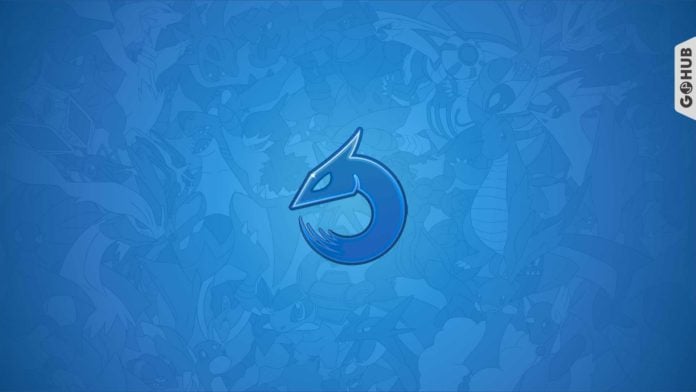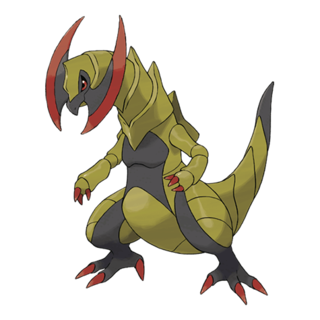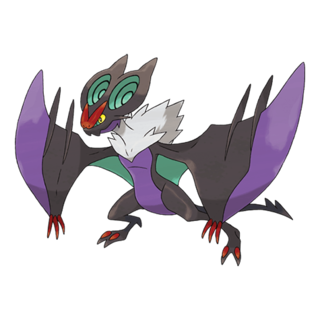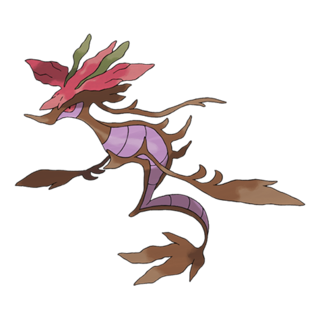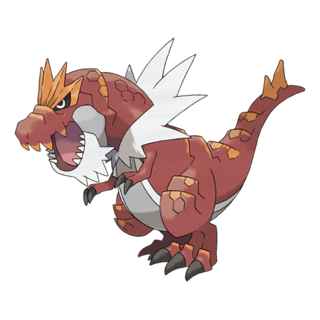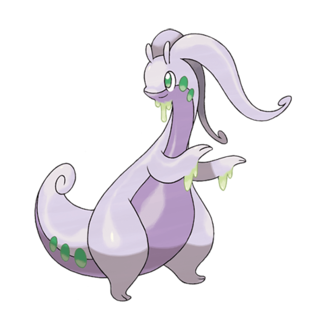The Dragon types are undoubtedly the most majestic of all Pokémon types.
Rarer than other types and with the highest average base stat total in the main series games, Dragon types naturally allure to the fantasy and imagination of Pokémon trainers from all across the world.
Which begs the question…
What are the survival habits of these powerhouses in the wild?
Now, this question wouldn’t exactly apply to legendary dragons as some of them are interdimensional beings, some live in the heights of the sky, and some whose habitats are questionable.
So we will stick to the non-legendary Dragon types up to and including Gen 6 as that’s the ongoing generation at the time of the writing of this article.
We have all been fascinated with wildlife experts at some point in time. So as an ode to that, a Dragon type enthusiast like me couldn’t help but write this piece of work to showcase the natural habitat and feeding habits of these mighty beasts to all of you!
Brace yourselves as we go on a wild Pokémon tour of the dragons!
Dragonite
The OG Dragon type and the pioneering pseudo legendary… Dragonite is one of the most lovable dragons in the Pokémon world. In Pokémon GO, our fascination towards the game started with the aim to catch a Dragonite in the game! It helps that Dragonite is known to be one of the friendliest Dragon types in particular.
Natural habitat and feeding habits
Dragonite are, in general, seafaring dragons that live in remote islands and forests along coastlines.
They are omnivores, feeding on berries, nuts and have a penchant for fish Pokémon. At times, they resort to small mammal Pokémon as well.
They are fast creatures that dive into seas and rivers to swiftly catch fish Pokémon like Magikarp and Remoraid in their powerful jaws.
Dragonite are very social and often hunt together to catch a large flock of fish for their family. This cohesive hunting unit should ideally make them very efficient hunters but because of their kind nature, some Dragonite willingly turn into herbivores throughout their lives. Needless to say, Dragonite are amazing dragons that truly justify the regard that trainers have for them.
Kingdra
Kingdra may not be among the most powerful Dragon types but it is undoubtedly one of the most ferocious. There is a select group of Water Pokémon that sailors fear and this group includes Gyarados, Jellicent, Tentacruel, Sharpedo, and the water-dwelling dragons: Kingdra and Dragalge.
Natural habitat and feeding habits
Kingdra lives in the deeper parts of the ocean and has quite the reputation. Some live in underwater caves along the Mariana Trench and they usually tend to hibernate there. They are known to cause powerful whirlpools by simply yawning.
Kingdra’s fearsome reputation is truly justified and while their snout looks narrow, it can be expanded while devouring prey. They will often use their Twister attack to render their prey senseless and then eat them comfortably. However, they often scavenge and will even eat bits and pieces of meat torn apart by Pokémon like Sharpedo.
Recent research by some scientists has even shown Kingdra preying on eggs. They use their powerful snouts to break open eggs and suck the nutritious contents within. Under extreme hunger, some Kingdra have even been noted to prey on their own eggs.
Flygon
The ‘Desert Spirit’ is one of the most efficient hunters among Dragon types. Their natural hunting tendencies are quite flamboyant right from their time as a Trapinch wherein they make pits of sand that serve as a trap for passing Pokémon. Trapinch waits at the bottom of the pit and unleashes at its victim with its powerful jaws. But Flygon’s hunting habits are on a different level altogether!
Natural habitat and feeding habits
Flygon has earned the moniker of the ‘Desert Spirit’ courtesy of its hunting habits. It flaps its wings and whips up a sandstorm, at the eye of which Flygon is present. For the onlooker, Flygon is invisible and they can only hear a beautiful and melodious sound that resembles a woman singing (hence, Desert Spirit). Anything that is unfortunate enough to venture into the sandstorm is slashed apart by a Dragon Claw and quickly devoured by Flygon.
Flygon inhabits the deserts and widely prey on smaller Ground and Normal types like Sandshrew, Sentret, and Cubone. For larger prey, it often teams up with Krookodile to kill Pokémon like Camerupt, Marowak, or Darmanitan and happily shares the meal with them.
During the event of severe natural sandstorms when prey is scarce, they would also engage in scavenging and feed on carrion.
Altaria
Altaria doesn’t possess the hunting skills typically associated with Dragon type Pokémon. They are timid and are also not usually feared by most Pokémon. And that’s why they usually stick to flocks of other Altaria and Swablu, blending in naturally with bird Pokémon.
Natural habitat and feeding habits
Altaria reside in mountaintops and branches of high trees where they make their nests and are mostly free from predators. They love to gorge on berries, fruits, bulbs and also feed on Bug type Pokémon like Wurmple, Caterpie, and Larvesta. I’m addition, they have been observed to scavenge garbage bins in the cities.
For many years, the lack of fluffy feathers along Altaria’s face and neck was a mystery until a Pokémon researcher from the Unova region observed a remarkable phenomenon around 8 years back.
A Mandibuzz was feasting on a dead Hippowdon and the researcher was taking photographs of the same when she suddenly noticed an Altaria descending on the carcass. And there it was! The mystery of the featherless neck solved! Altaria stuck its head into the rotting carcass and had a mouthful.
This clearly proves that Altaria will eat almost anything as long as the food is ‘dead’. However, the surge of plastic in recent years has led to many cases of Pokémon doctors treating Altaria that have swallowed plastic. This is an alarming issue that can quite possibly reduce the numbers of Altaria in the wild.
Fortunately, the Hoenn region has been adopting effective measures to curb the disposition of plastic and encourage recycling. Such efforts have resulted in a thriving Altaria population in the Hoenn region.
Note: The next three Pokémon are the most vicious Dragon types in the wild, known for their exceptional hunting skills and power.
There are reports of these three killing and devouring human beings. So if you come across one in the wild, don’t tread closer and exercise caution.
Salamence
Salamence is one of the most feared Dragon types and for good reason. With a fiery temper and a vicious tendency to rampage, Salamence are powerful hunters and killers alike.
Natural habitat and feeding habits
Salamence usually live on mountaintops and inside caves. They love flying and usually spare the cave inhabitants only to go out and hunt. The behavior of a Salamence is very similar to big cats, as they hunt big prey and feast on it right away or in the comfort of their caves.
They often use their Fire Blast attack to scorch large prey like Tauros, Zebstrika or Sawsbuck from above and feast on barbecue food!
The ferocious dragon has also been seen to devour other Dragon types like Flygon and Altaria. With one Outrage, Salamence renders its Dragon type victim incapable of defending themselves and helps themselves to a dragon meal right there. They only fear Dragon types like Garchomp or Hydreigon. So while Salamence are known to eat flocks of bird Pokémon whole and have been observed to have mid-air battles with Garchomp for prey, they mostly work together due to mutual respect.
Salamence loves to take long naps after a heavy meal. As such, it is not an unusual sight for cave explorers to come across a sleeping Salamence within the confines of the cave. It is however advised to leave the cave immediately as irate Salamence awoken from their slumber have gone on to kill and devour humans.
Garchomp
Garchomp are the most versatile Dragon types when it comes to hunting. They use various methods to hunt their prey and are known to never miss their prey, going on to chase them down until caught. This can be attributed to the fact that Garchomp can hunt in land, water, or sky… literally no place is safe from Garchomp.
Add the fact that Garchomp is highly intelligent, fast, and agile, it is easy to see why these land shark her dragons are at the top of the food chain.
Natural habitat and feeding habits
Garchomp reside in caves and deserts, where they live mostly in isolation. They live cordially with other Pokémon in the cave ecosystem and being a ferocious and powerful predator, other cave Pokémon don’t trouble a Garchomp or its offspring.
Despite not being a type, Garchomp can ‘fly’ at Mach speed and as such, is known to lunge at prey from the skies at blitzkrieg speeds. With Rough Skin and speeds that cross the sound barrier, Garchomp can kill most smaller Pokémon simply on impact. Larger Pokémon like Tauros, Ambipom, Ponyta, and Infernape are often hit by a surprise Dragon Rush and are then torn apart by a Dragon Claw. Prey trying to fight back are often hurt by Garchomp’s Rough Skin.
Additionally, Garchomp can also lurk in the sand or ground, launching itself on unsuspecting prey and taking them down before tearing them apart. Due to its shark-like design, Garchomp also avidly hunts Water Pokémon like Magikarp, Vaporeon, and Psyduck.
Garchomp is noted for having mid-air battles with Salamence while preying on flocks of bird Pokémon. However, due to the sheer number of bird Pokémon present in flocks and the mutual respect between the two dragons, it is not uncommon to see Garchomp and Salamence partner up to slaughter Pokémon together and share the meal.
Lastly, while Garchomp wouldn’t hunt human beings by habit, they are known to be extremely territorial. Their pre-evolution, Gabite, is known to be an asset. Not only are Gabite known to hoard precious gems in their nests but their scales are also known to have medicinal value. So if you are looking to steal a Gabite’s gems, prepare to have a Garchomp chase you and make a happy meal out of you!
Hydreigon
This three-headed dragon is literally brutal and quite possibly, the most dangerous Dragon type of them all! They are known to kill literally anything that has meat and moves. While a Hydreigon wouldn’t kill a Salamence or Garchomp per se, it would still go on to attack them if it wishes to. As such, even fearsome Pokémon opt to keep their distance from Hydreigon.
Natural habitat and feeding habits
Hydreigon lives in caves, abandoned places, and dense mountaintops. In fact, their penchant for urban places have led to a good population of the Hydreigon line in the Chernobyl radiation zone.
For them, almost anything is a meal and they would paralyze them with their Tri-Attack, only to rip them apart.
What makes Hydreigon truly dangerous is that Hydreigon won’t just kill for food… they even kill out of sheer pleasure.
They have a natural tendency to attack anything that moves and will often just kill and leave, not necessarily make a meal out of the victim.
When hunting, Hydreigon will unleash a fury of Special attacks such as Dragon Pulse, Flash Cannon, or Dark Pulse to incapacitate their prey and often feed on them alive. Even when full, Hydreigon would kill and eat later. Such is the notoriety associated with these Dark Dragon types.
As mentioned, there have been several reports of Garchomp and Salamence teaming up but absolutely no reports of Hydreigon teaming up with other Dragon types. While a Hydreigon wouldn’t resort to battling a Garchomp or Salamence, they often devour the young or maim other dragons.
If you come across a Hydreigon and don’t have a Pokémon to counter it, just run! Hydreigon have been reported to sever the limbs of human beings or large trainer Pokémon, and let them go. So if you want to come out in one piece, don’t go near a wild Hydreigon.
Haxorus
Despite their fearsome appearance, Haxorus is a straight-out herbivore! Intelligent, calm, and territorial, Haxorus are majestic Dragon types that live with pride and peacefully with other Pokémon.
Natural habitat and feeding habits
Haxorus are found in mountainous terrain, dense forests, and caves where they reside peacefully with all sorts of Pokémon. Their imposing size and battling prowess often make them natural leaders.
Haxorus’ build makes them more efficient herbivores than many non-dragon Pokémon. Their axe-like tusks are supremely tough and are very convenient for digging out roots and vegetables from the ground. In addition, they also help Haxorus pull the branches of trees closer to their mouth to feed on berries, fruits, and leaves. The fact that Haxorus have long necks, makes it easier for them to eat from trees.
Haxorus’ are territorial but surprisingly friendly. They will never attack humans inherently and will often simply try to ward them off with exuberant displays with their mighty tusks. These tusks also help Haxorus ward off threats like Garchomp or Hydreigon, also in mating rituals.
Druddigon
Druddigon are among the lesser powerful Dragon types and are not competent enough to hunt and kill prey. However, they have adapted amazingly well and possess a long-standing design reminiscent of ancient dragons.
Natural habitat and feeding habits
Druddigon are pure cave dwellers and spend most of their lives inside dark caves. They are like Hyenas and salvage carrion left by Garchomp and Salamence.
They avidly feed on rotting carcasses or leftovers, eating all the way to the bones. They are known to be cannibalistic and even feed on dead Druddigon.
That said, they have been known to feed on Pokémon like Zubat, Aron, Whismur, etc, and love to feast on eggs of other Pokémon.
Noivern
Being based on bats, Noivern has similar habits and is largely omnivorous. They possess good hunting skills due to their natural speed and agility.
Natural habitat and feeding habits
Noivern mostly lives in caves but some of them tend to reside in forests. They are effortless hunters, using their dangerous Boomburst attack to knock their prey out of their senses and easily make a meal out of them.
The cave-dwelling ones have easy prey, simply using their speed to catch small Bug types and other Pokémon like Dunsparce, Woobat, and Sentret.
The rarer forest-dwelling ones fly quietly in the night, using their large ears to detect prey easily and catch Pokémon like Murkrow, Hoothoot, Raticate, etc. In addition, they also occasionally feed on fruits, berries, nectar, and eggs of other Pokémon.
Dragalge
Dragalge is a close cousin of Kingdra and while they more or less have a similar diet, Dragalge’s hunting skills are not as good as Kingdra’s.
Natural habitat and feeding habits
Found in seas, Dragalge relies heavily on the art of camouflage to catch prey. They hide easily among seaweed and lunge mercilessly at unsuspecting small fish Pokémon.
While they are inferior predators when compared to Kingdra, they have an ace up their sleeve: their Poison typing.
Dragalge will shoot out toxic Sludge Bomb or Toxic to stun and poison their prey, letting it die and then proceed to devour them at ease. Their poisonous traits have overcome their hunting skills and have established them as one of the most feared predators in the ocean.
Tyrantrum
Large populations of Tyrunt and Tyrantrum have been reinstated in the forests starting from the Kalos region and have been methodically released into the wild in all regions. Tyrantrum was the apex predator and the undisputed king of the Pokémon world back in its prehistoric times. So how does it fare in today’s world?
Natural habitat and feeding habits
While the reintroduction of Tyrantrum into the world invited much debate, these majestic dinosaur dragons have adapted amazingly to the world today.
With the Dragon and Rock typing, Tyrantrum is able to successfully prey upon a large number of wild Pokémon like Talonflame, Gogoat, Charmeleon, and Heliolisk. They are excellent hunters, being able to kill their prey in one blow and be unchallenged by any other Pokémon in the wilderness.
While limited numbers of Tyrantrum exist in all parts of the world, they are still exceptionally rare. They live in large caves and deep in forests mostly difficult to access by humans. Since they have been brought back from the prehistoric ages by humans, they tend to maintain a cordial relationship with us. However, an attempt by trophy hunters in the Kalos region to kill one for the bragging rights resulted in bloodshed. The hunter had tracked one into a cave but what he didn’t anticipate was the fact that the Tyrantrum’s mate was close by. The hunter was torn into two by both Tyrantrum and each half was devoured.
It should be understood that Tyrantrum are the Regal Pokémon and they were the king and queen of their times. So it is very important to show them the respect that they deserve.
Goodra
Goodra are one of the most unorthodox Dragon types with their base form, Goomy, considered to be the weakest Dragon type in existence.
While Goomy and Sliggoo use their caustic slime to melt small prey and devour them whole, Goodra are timid dragons that are primarily herbivores.
Goodra used to be a more powerful dragon in the past but with time, their hunting skills went downhill and they are probably the meekest Dragon types. That said, Goodra is still a pseudo legendary and it can become an absolutely deadly threat when it needs to.
Natural habitat and feeding habits
Goodra is found in swamps and marshes in the Kalos, Alola, and Galar regions. These slug monsters eat plants, small Bug, Water, Normal and Grass type Pokémon and berries. Occasionally, it also feasts on carrion and leftovers of other Pokémon.
It’s not really an active Pokémon and mostly relies on easy food, much like a Panda. They are very caring of their young and will often hoard berries and fruits for them. Goodra are extremely friendly towards humans and will often need you for food. As such, it is a very common sight for Pokémon rangers to leave packets of fresh fruits for Goodra to take away for themselves and their young.
If you ever come across a Goodra, feel free to feed it but make sure you treat them with respect. Yes, they may appear to be easy to pick on but make no mistake about it… they’re still pseudo legendary Dragon types. Provoking them might result in a lot of broken bones. And yes, be accepting of their hugs. The slime may be disgusting but the Pokémon is amazing!
Conclusion
The Dragon types are undoubtedly one of the most amazing creatures in the world of Pokémon.
Coming across any one of them in the wild would be quite an experience and if you treat them with respect and stay at a distance, it would be an amazing one for you!
If you want to catch them, I would strongly support that! These are some of the most powerful Pokémon and would be assets for any Pokémon trainer and their team.
Just ensure that you take good care of them and train them well. I can assure you that becoming a Dragon master is undoubtedly one of the best things that you can be!

